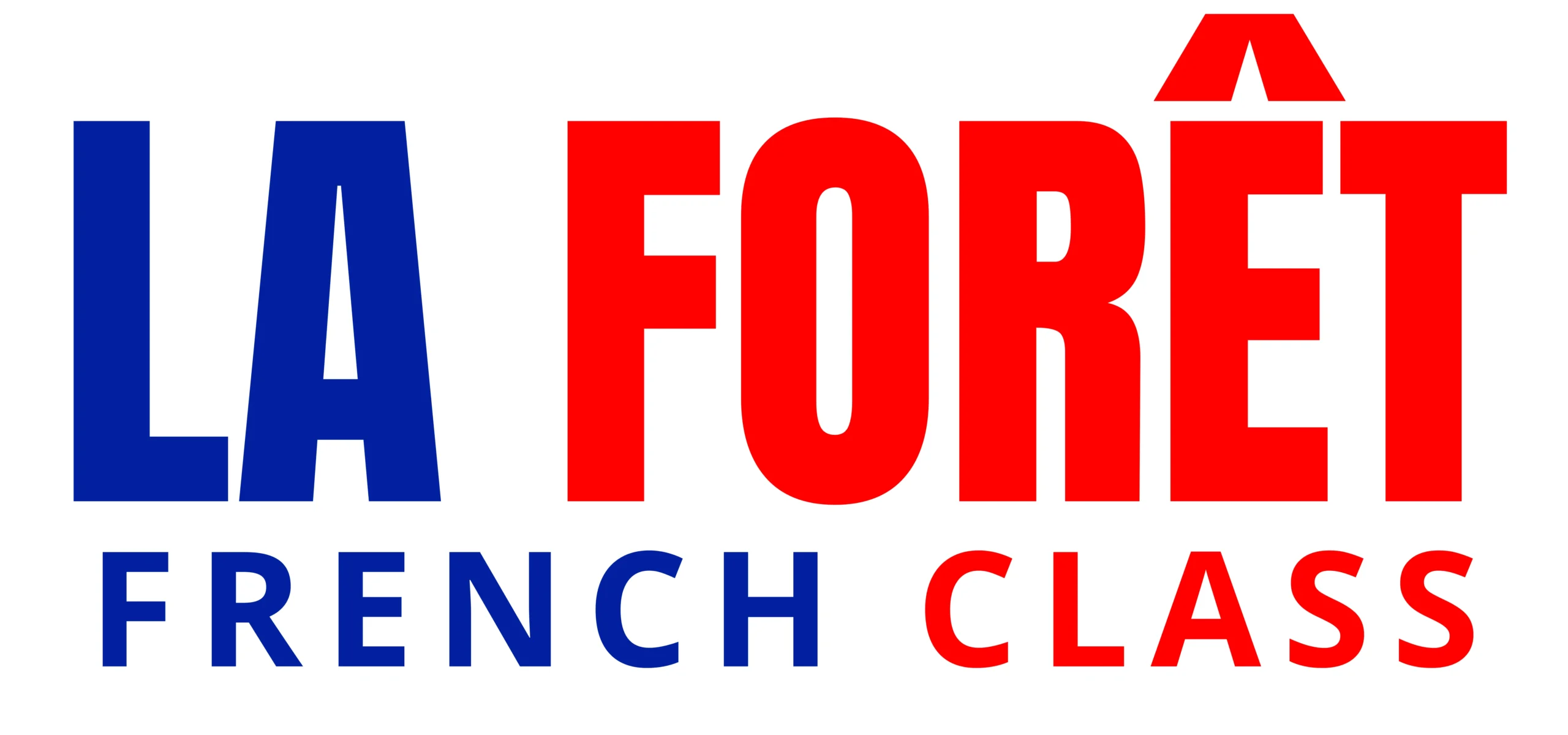Understanding French comparatives and superlatives is a key step to describing things effectively. Whether you want to say something is bigger, smaller, better, or worse, these grammatical tools are essential. Let’s learn the French comparatives!
The French Comparative
Comparative adjectives help us compare two things. There are three ways to compare things in French:
- Superior: Something is more than something else.
- Inferior: Something is less than something else.
- Equal: Something is as much as something else.
Forming Comparative Adjective Sentences
To form a comparative sentence, we use the following structure:
| Plus…que | (more…than) |
| Moins…que | (less…than) |
| Aussi…que | (as…as) |
Example:
- Le chat noir est plus grand que le chat gris. (The black cat is bigger than the grey cat.)
Forming Comparative Adverb Sentences
We can also use adverbs to make comparisons. The structure is the same as with adjectives.
Example:
- Tu marches moins lentement que moi. (You walk less slowly than me.)
- Elle conduit plus prudemment que son frère. (She drives more carefully than her brother.)
- Je dors moins bien que d’habitude. (I sleep less well than usual.)
Il court aussi vite que le vent. (He runs as fast as the wind.)
The French Superlative
Superlative adjectives show the highest or lowest degree of quality.
Forming Superlative Sentences
To form a superlative, we use:
| Le/la/les plus | the most |
| Le/la/les moin(s) | the least |
Example:
- Il est le plus grand garçon. (He is the tallest boy.)
- La plus grande ville du monde (the biggest city in the world)
Elle est la moins patiente de la classe. (She is the least patient in the class.) - C’est le plus beau jour de ma vie. (It’s the most beautiful day of my life.)
Using the Preposition ‘de’ in Superlative Sentences
The preposition “de” is essential when forming superlative adjectives. It indicates the group or category being compared.
Example:
- Il est le plus grand garçon de l’école. (He is the tallest boy in the school.)
- Elle est la moins intelligente de la classe. (She is the least intelligent in the class.)
- Ce sont les meilleurs étudiants de l’université. (They are the best students at the university.)
Grammar Woes? We Can Help!
Get support from La Forêt’s experts—no more guesswork or frustration!
Irregular Comparative and Superlative Forms
Unfortunately, not all adjectives follow the regular patterns. Let’s look at some common irregular forms.
Bon (Good)
Comparative: meilleur (better)
Superlative: le meilleur (the best)
Example:
- Mon livre est meilleur que ton livre. (My book is better than your book.)
- Mon livre est le meilleur. (My book is the best)
Bien (Well)
Remember, bien is an adverb.
Comparative: mieux (better)
Superlative: le mieux (the best)
Example:
- Elle parle mieux français. (She speaks French better.)
- Elle parle francais le mieux (She speaks French the best)
Mauvais (Bad)
Comparative: plus mauvais or pire (worse)
Superlative: le plus mauvais or le pire (the worst)
Example:
- Ce vin est plus mauvais que l’autre. (This wine is worse than the other.)
- C’est le vin le plus mauvais (This is the worst wine)
Petit (Small)
For concrete nouns, use plus petit.
For abstract nouns, you can use moindre.
Example:
- Je suis plus petit que Renard. (I am smaller than the fox.)
- Il ne fais pas le moindre effort. ( He doesn’t put the slightest effort)
Practice the Comparative and Superlative
To solidify your understanding, try these exercises:
1. Rewrite the sentences in French using different comparative or superlative structures:
- The red car is faster than the blue car.
- He is the tallest student in the school.
2. Translate the following sentences into French:
- She is less intelligent than her sister.
- This is the best movie I have ever seen
To further strengthen your grasp of French grammar, explore our detailed guides on regular ER, IR, and RE verbs as well as essential topics like subject pronouns, possessive adjectives.
Comparatives and Superlatives in French Idioms
While French idioms don’t explicitly use the grammatical structures of comparatives and superlatives as frequently as English, they do employ similar concepts of comparison and exaggeration.
French idioms often rely on vivid imagery and exaggeration to convey meaning. While they might not follow the strict grammatical rules of comparatives and superlatives, they often imply a comparison or extreme degree.
Examples of French Idioms with Comparative or Superlative Connotations
- “Être plus malin qu’un singe” – To be smarter than a monkey: This idiom implies a high degree of intelligence, similar to using a superlative.
- “Avoir faim comme un loup” – To be as hungry as a wolf: This idiom uses a simile to express extreme hunger, similar to a comparative.
- “Être frais comme une rose” – To be as fresh as a rose: This idiom compares someone’s appearance to the freshness of a rose, suggesting a high degree of beauty or vitality.
- “Fort comme un boeuf” – As strong as an ox: This idiom uses a simile to express extreme strength, similar to a comparative.
- “Fou comme un baleine” – As crazy as a whale: While whales are not typically associated with craziness, this idiom exaggerates someone’s foolishness, similar to a superlative.
How to Use These Idioms
- Context is key: Understand the situation and the intended meaning of the idiom.
- Practice: The more you expose yourself to French, the more natural these idioms will become.
- Nuance: Be aware that the level of comparison or exaggeration in French idioms might differ from English equivalents.
Conclusion
By understanding French comparatives and superlatives, you’ll be able to express yourself better. With a little practice, you’ll master these !
Would you like to learn more about French grammar or practice with some exercises? Check out our upcoming batches here[Hyperlink to reach the upcoming batches page]
Frequently Asked Questions
1. What is the difference between a comparative and a superlative?
Ans: A comparative adjective compares two things, while a superlative adjective compares more than two things or indicates the highest or lowest degree of quality.
2. Are there irregular forms for comparatives and superlatives?
Ans: Yes, there are a few common irregular forms. The most important ones are:
Bon (good): meilleur (better), le meilleur (the best)
Mauvais (bad): pire (worse), le pire (the worst)
Petit (small): plus petit (smaller), le plus petit (the smallest)
3. Can I use adverbs in comparatives and superlatives?
Ans: Yes, you can. The structure is the same as with adjectives. For example:
Comparative: Tu parles français plus lentement que moi. (You speak French more slowly than me.)
Superlative: Il chante le plus joliment de tous. (He sings the most beautifully of all.)
4. When do I use the preposition “de” with superlatives?
Ans: You use “de” when you want to specify a group or category. For example:
Elle est la plus belle fille de la classe. (She is the most beautiful girl in the class.)
5. How can I practice using comparatives and superlatives?
Ans: The best way to practice is by using them in your conversations and writing. Try to compare things around you, or describe people and places using comparatives and superlatives.





